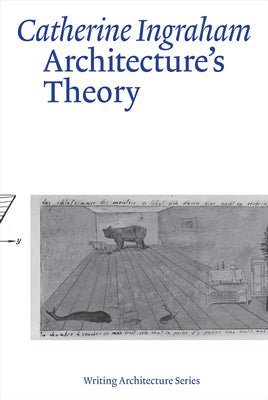-

A note on book covers: while we do our best to ensure the accuracy of cover images, ISBNs may at times be reused for different editions of the same title which may hence appear as a different cover.
Architectures Theory
Architectures Theory
Couldn't load pickup availability
From poststructuralism and deconstruction to current theories of technology and nature, critical theory has long been closely aligned with architecture. In turn, architecture as a thinking profession materializes theory in the form of built work that always carries symbolic loads. In this collection of essays, Catherine Ingraham studies the complex connectivity between architecture's discipline and practice and theories of philosophy, art, literature, history, and politics. She argues that there can be no architecture without theory.
Whether considering architecture’s relationship to biomodernity or exploring the ways in which contemporary artists and designers engage in figural play, Ingraham offers provocative interpretations that enhance our understanding of both critical theory and architectural practice today. Along the way, she engages with a wide range of contemporary theorists, including Giorgio Agamben, Judith Butler, Jacques Derrida, Graham Harman, and Timothy Morton, considering buildings around the world, including the Palace of Culture in Warsaw, the Viceroy’s House complex in New Delhi, Mack Scogin and Merrill Elam's Wolfsburg Science Center project in Germany, and the Superdome in New Orleans. Approaching its subject matter from multiple angles, Architecture’s Theory shows how architecture's theoretical and artifactual practices have a unique power to alter culture.
Details of Book
Related Collections:
A note on book covers: while we do our best to ensure the accuracy of cover images, ISBNs may at times be reused for different editions of the same title which may hence appear as a different cover.

-
One Line Summary
Deep dive into architecture’s philosophical and cultural links.
-
Who is this book for?
If you're interested in understanding how architecture is intertwined with philosophy, art, and politics, this book offers insightful essays that explore these connections with depth and clarity. It bridges complex theories with real-world examples, making abstract ideas tangible. Whether you're a student, professional, or simply curious about the theory behind buildings, this collection will deepen your appreciation for architecture's role in shaping culture.

